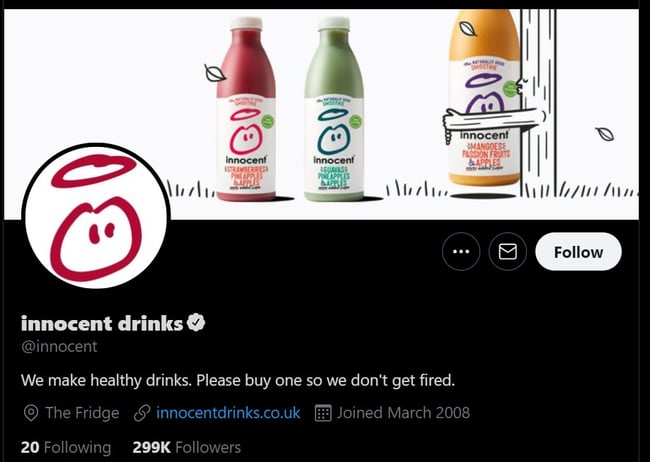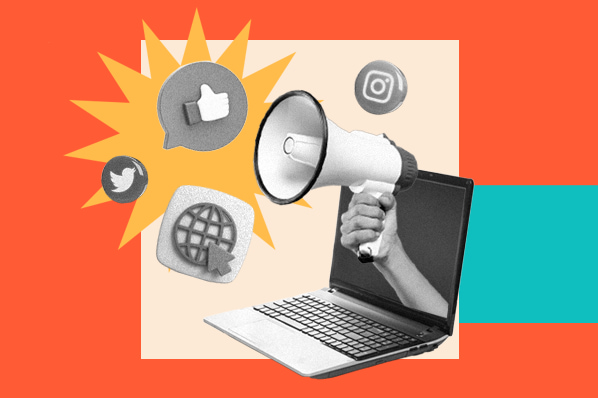Burger King’s mishap highlights the importance of having social media etiquette standards for your company and employees. And in this article, you’ll learn how to avoid poor social media etiquette and mind your manners online.
Social media is now part of everyday life with over 4.4 expected users by 2025. As such, it’s a no-brainer that brands use it to communicate with their customers.
However, just as it’s crucial to practice proper etiquette when conversing in-person, you also need to do the same online.
Poor social media etiquette can lead to terrible consequences for an erring company. For example, in 2018, Snapchat lost an estimated $800 million after making a post that seemed to trivialize domestic violence.
If you don’t want similar terrible consequences to your business, then you need to take social media etiquette seriously.
The Benefits of Social Media Etiquette
Here are some benefits of practicing proper social media etiquette.
It makes your brand empathetic
Your audience is your greatest asset, and using proper social media etiquette forces you to put yourself in their shoes. And when you’re in their shoes, you gain a better perspective of their wants and needs.
It helps you recover from fails
There’s no perfect brand, and we all stumble at times. However, with good social media etiquette, you can recover from your mistakes. For example, despite its fail as quoted in the introduction, Burger King managed to turn things around, at least to an extent, with an apology that felt genuine.
It makes your social media campaigns more productive
Social media is a landmine that’s difficult to navigate. However, good social media etiquette can guide you and help you produce good results.
It helps you focus on what’s important
Good social media etiquette reduces the chances of starting a fire you’ll need to put out on social media. Thus, you’ll have time to focus on what’s really important: your bottom line.
It keeps you on the good side of the law
If your platform has privacy and compliance laws, good etiquette will help you stay on their good side and protect you from lawsuits and such.
It keeps you top-of-mind
When you respond quickly to feedback, even positive ones, you show that your customer’s opinions matter.
Therefore, it’ll be easier for your business to stay top-of-mind for these customers.
Do’s and Don’ts of Social Media Etiquette
Each social media platform is different, but social media etiquette transcends these differences and will result in good results regardless of the platform. Here are 5 Do’s and 5 Don’ts of social media etiquette.
Do’s of Social Media Etiquette
1. Stick to your core values
Your core values should resonate in your content. So if one core value is respect, you’d want to keep sassy comments out of your social media.
On the other hand, if your brand is big on humor, then snarky comments would be on-brand. An excellent example of this is Wendy’s.

2. Respond Quickly
Here’s an interesting stat: 79% of customers expect a response in the first 24 hours of reaching out to your brand on social media.
So, DO respond as soon as possible. Responding quickly to positive feedback reinforces a customers’ liking of your brand.
Slow response, especially to complaints, makes customers feel like they’re left on read—and we all know how that feels.
Nike Support (@NikeSupport) replies to customers every few minutes, which is probably one reason why people love them on social media.
3. Complete your social page profile
If people come to your page and see an incomplete profile, it gives the wrong impression and they’ll feel you’re not serious enough about engaging with them.
So, complete your profile and include useful information, for example, contact information when appropriate.
Glossier’s Instagram profile, for example, contains information you need to know about it and includes its website where you can get more information.

4. Use Hashtags Correctly
Hashtags can boost engagement, but too many hashtags on a post can make you look unprofessional and annoying.
Displaying good social media etiquette will require you to use only hashtags that are relevant to the post.
Coca-Cola’s branded #ShareACoke hashtag is an excellent example of a brand that used hashtags well.
5. Post Regularly
While your audience and industry should be factored in, a good rule of thumb is to post at least once a week.
If you don’t, there’s the risk of losing out on opportunities for driving brand awareness.
Don’ts of Social Media Etiquette
1. Don’t overdo humor
Humor is subjective, and what’s funny to you might be insensitive or downright offensive to others.
If you’re not sure about how a joke would be taken, then it’s better to keep it locked away.
Aside from Wendy’s, another brand that’s hacked funny social media replies and posts is Innocent Drinks (@innocent)

2. Don’t be desperate
Don’t be desperate to get followers. It can be off-putting to see a business ask for followers every chance it gets.
By posting valuable and authentic content, you’ll be able to grow your follower count and get high-quality interactions that will attract even more people.
Fenty’s social media posts include testimonials from women of different nationalities and ethnicities, which is one reason for its rapid growth.

3. Don’t over-promote the business
Followers will quickly get tired if they see too much on social media from your brand.
Balance is key. If ever you’ll post more often than before, tell your audience beforehand and explain why. Then they’ll be less likely to unfollow you during your spree.
4. Don’t use a bot for replies
Tempted to use a bot to respond to your customers? Then you’re on your way to losing them.
Users are smart, and they can sense when a response is automated. If you can’t be online 24/7, share the hours when customers can reach you on the platform. Twitch Support’s bio contains its scope of assistance and open hours.

5. Don’t write in all caps
DO YOU WRITE IN ALL CAPS? Then you are likely stressing out your audience. Why? BECAUSE IT FEELS LIKE YOU’RE SHOUTING AT THEM!
Even Twitter’s official business website for brands advises against tweeting in all caps.
So, stop with all caps. They aren’t funny and come off as rude and aggressive. Use all caps only when something is truly important (or exciting), and you definitely HAVE to call your audience's attention to it.
Social Media Etiquette for Employees
Social media can be a minefield, and only good social media policies can guide brands and employees around it. Here are some guidelines to protect your employees, and by extension, your brand, from behaving indecently on social media.
Respect others
Although employees have the right to say what is on their minds and can post content on their personal time, it’s important to encourage them to be polite and calm on social media.
Thinking before replying or posting online can de-escalate a potentially bad situation.
Respect privacy and confidentiality
Social media isn’t the place to discuss sensitive company matters or disclose internal information.
As an employee, you might not realize that you’re discussing sensitive or internal matters, so the best thing is to take no chances. If it’s not your place to do so or you’re unsure, then move on without discussing such matters online.
Don’t always want to be first
There’s a rush that comes from being the first to ‘break the news.’ However, doing so might come at the cost of losing your job.
So before you post or comment, ensure you’re entitled to share the information. Even if it doesn’t get you dismissed, some information you share might hurt others and ruin relationships.
Don’t use social media on your employer’s time
Your employer is paying you for your time, so act accordingly. Don't abuse their trust even if your employer allows you to use social media while at work.
If you’re the social media manager, stick to the professional accounts. Using that time to attend to trivial, personal stuff is unfair. It’s also risky because you could end up mixing up accounts and posting something you shouldn’t with your professional account.
Be a good company ambassador
Be mindful that you represent your employer. Thus, post information like you’re posting on their behalf.
Use good judgment when posting online. For example, if someone posts negative information about the organization, don’t fly into a confrontation. Instead, tell someone in charge who can handle the matter or give you instructions on how to handle it.
Do Social Media Etiquette The Right Way
These Dos and Don’ts of social media etiquette might seem challenging to follow. However, following them can save you and your company a lot of stress.
Several brands have experienced the power of cancel culture firsthand, and you can avoid their experiences by practicing good social media etiquette.
When you care about your audience and put yourself in their shoes, you can have a good culture of social media etiquette that will benefit your brand.
Editor's note: This post was originally published in March 2010 and has been updated for comprehensiveness.
Social Media Marketing





![12 social media trends marketers should watch in 2025 [new data]](https://53.fs1.hubspotusercontent-na1.net/hubfs/53/social-media-trends_6.webp)
![The best social media platforms for video content in 2025 [consumer data]](https://53.fs1.hubspotusercontent-na1.net/hubfs/53/img-1-20250516-9399498.webp)


.png)
![Social media shopping in 2025: Everyone’s shopping on social — here’s how marketers can keep up [new data]](https://53.fs1.hubspotusercontent-na1.net/hubfs/53/1052%20x%20850%20social%20media.jpg)


![Best Social Media Marketing Courses to Take Online [Free & Paid]](https://53.fs1.hubspotusercontent-na1.net/hubfs/53/ft-smm.webp)